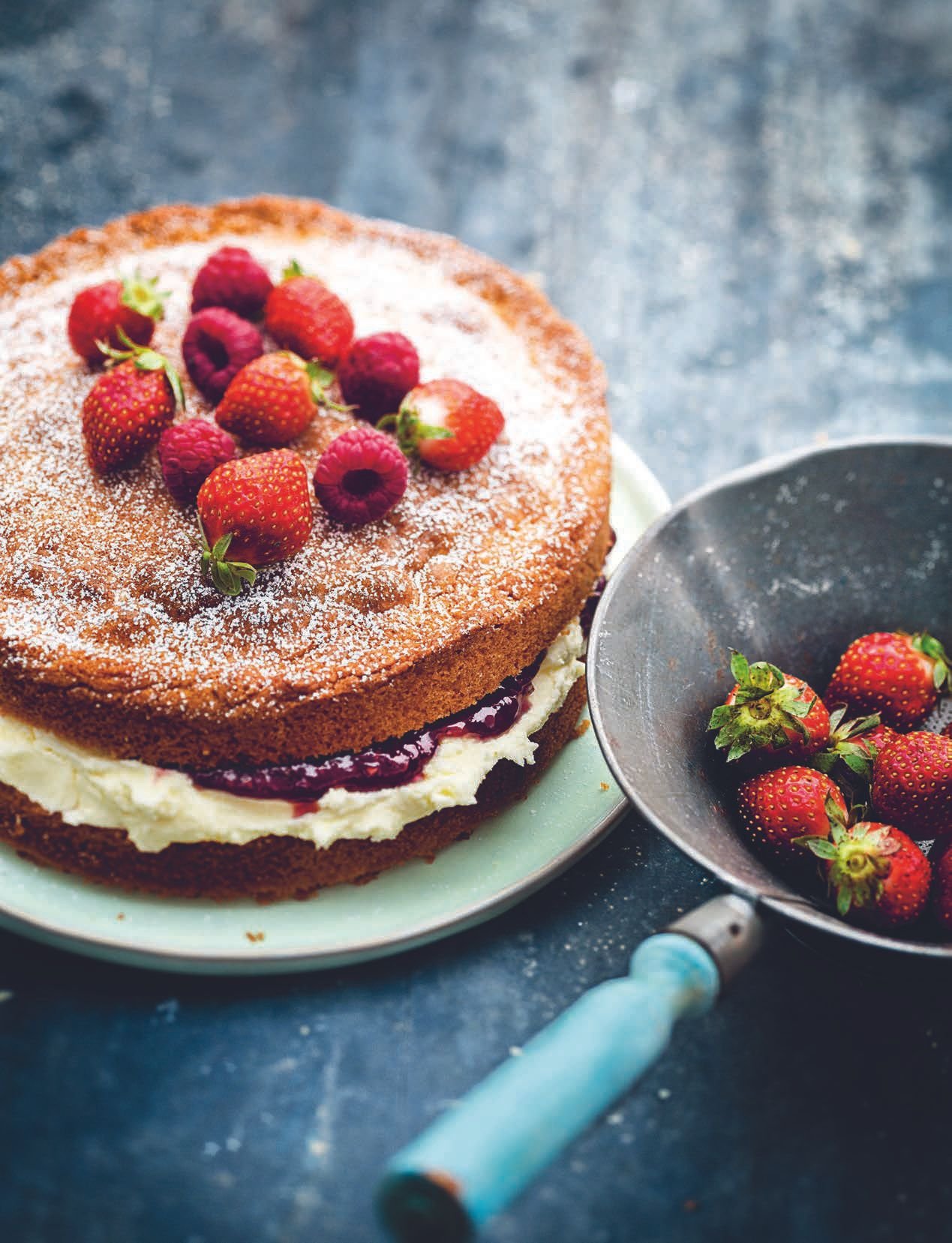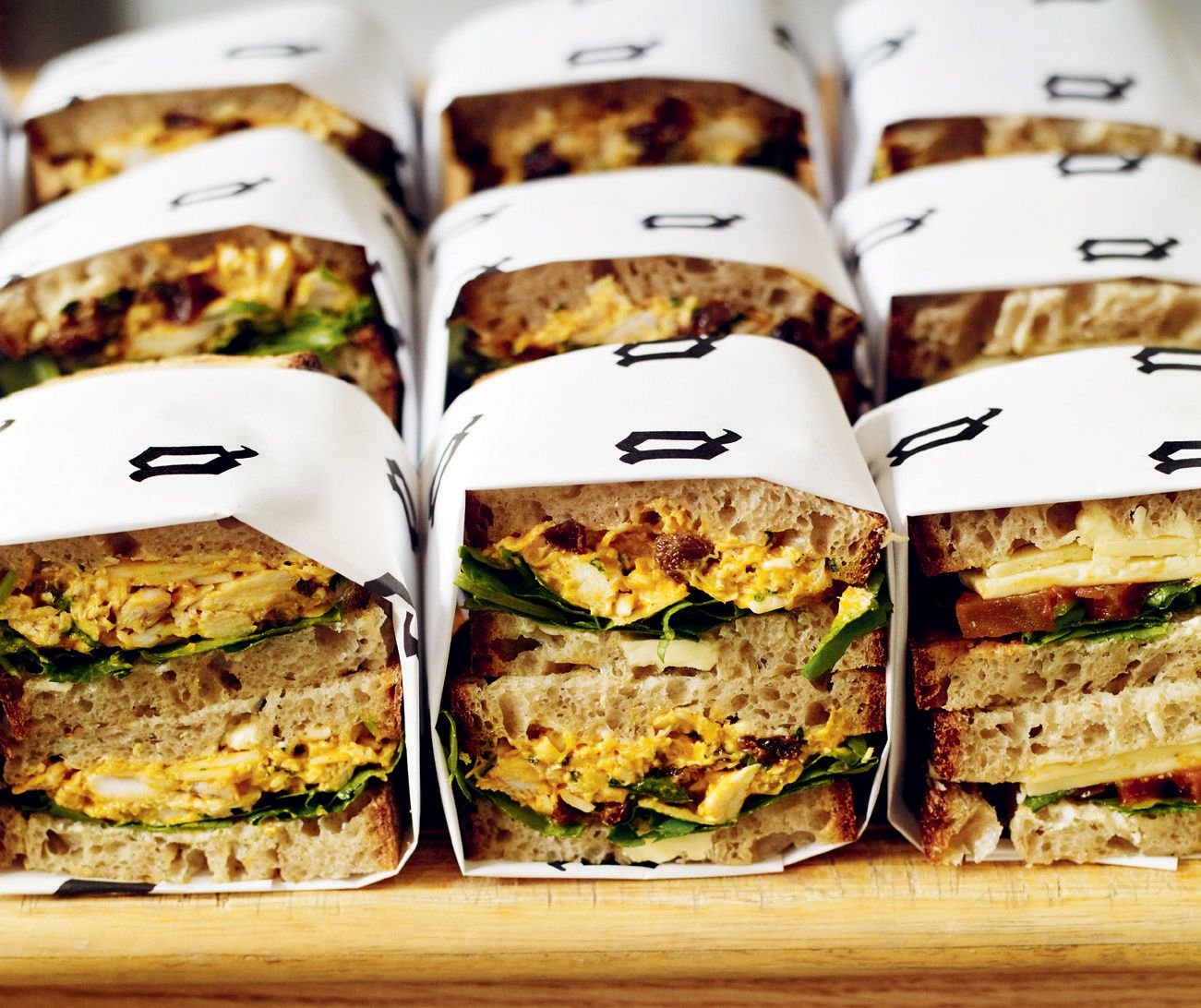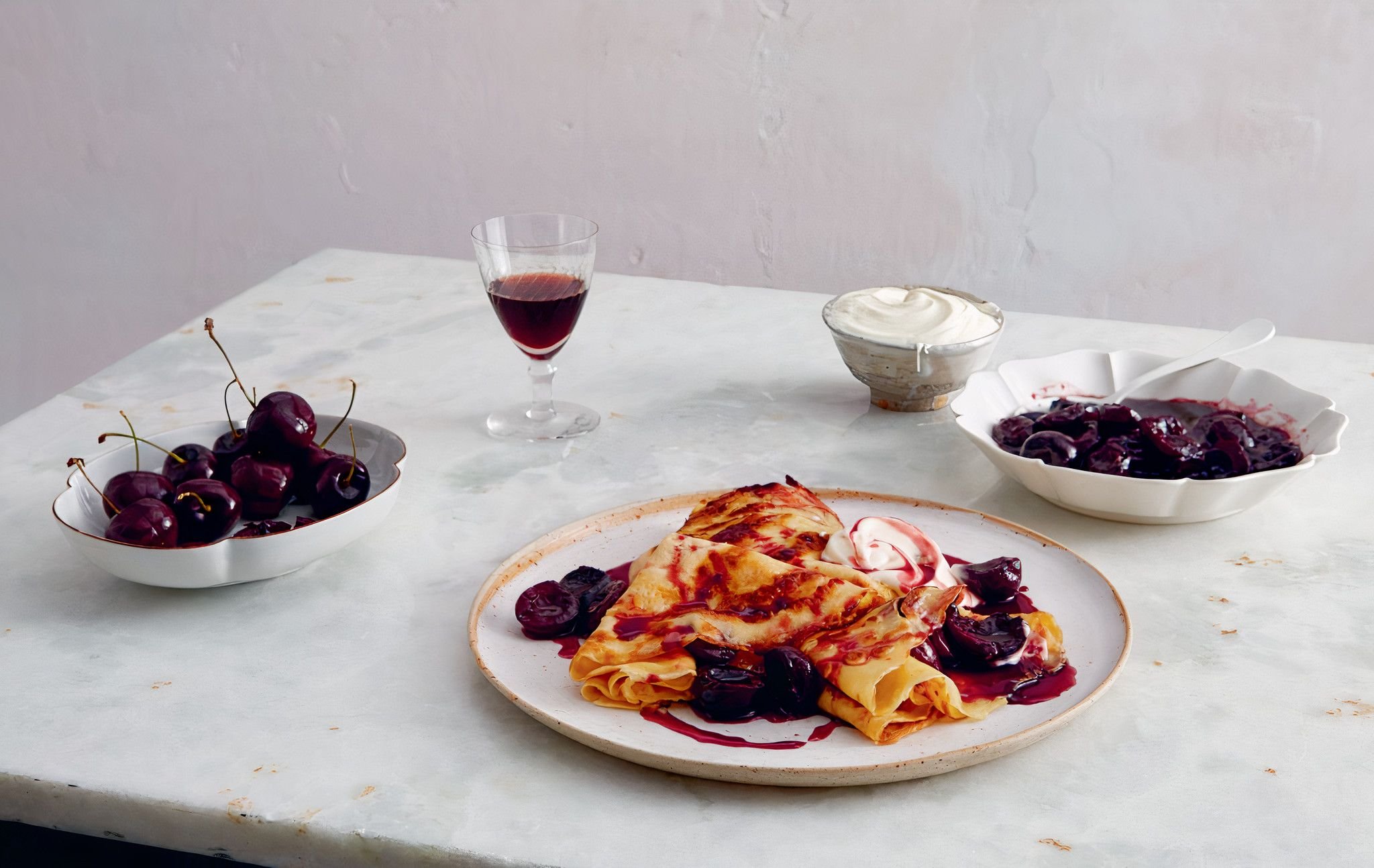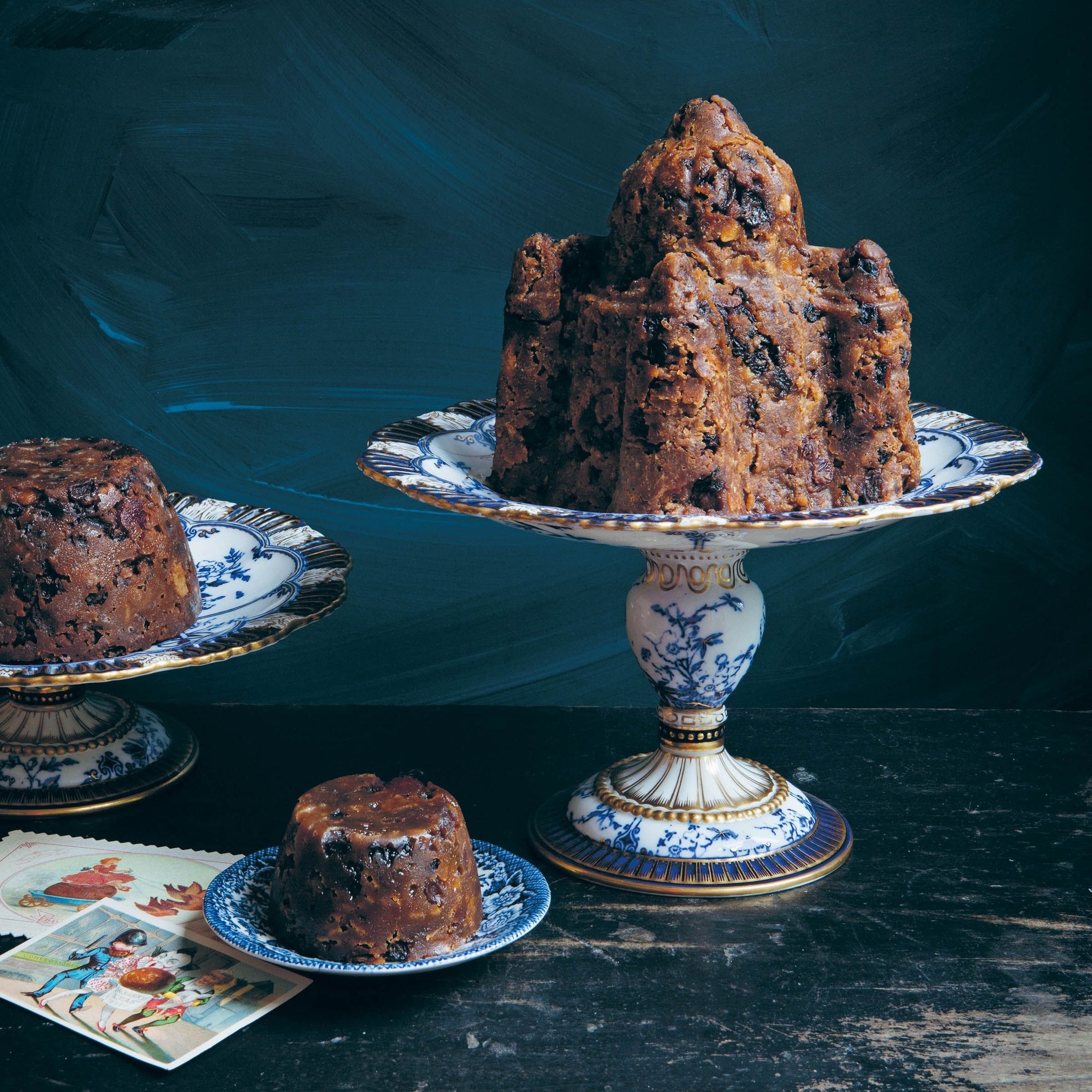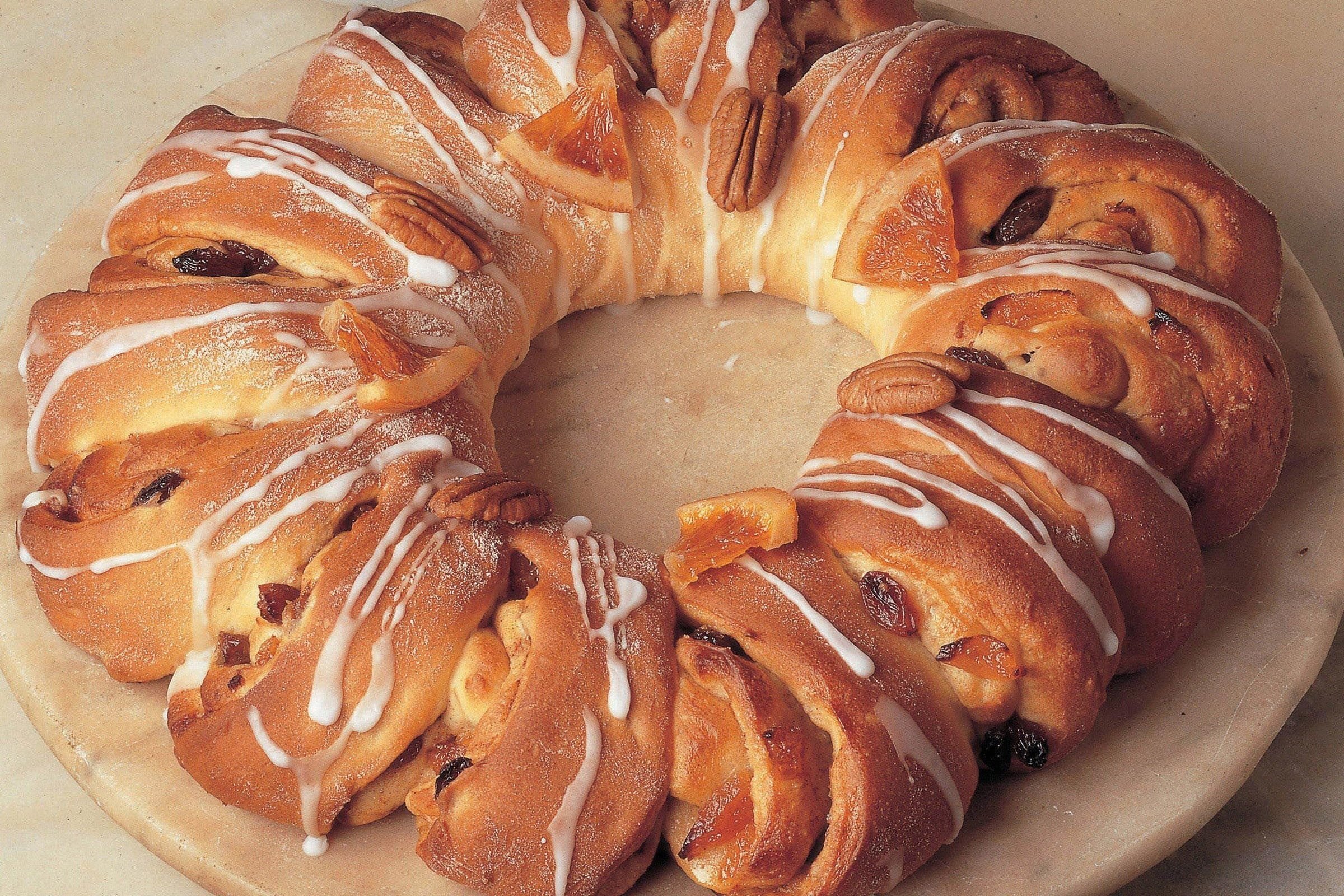Advertisement
5 dishes fit for royalty
26 May 2022 · Discover ckbk
By Susan Low
On June 2, 1953, the coronation of Queen Elizabeth II took place at Westminster Abbey in London. Seventy years later, Brits are pulling out the stops to celebrate Her Majesty’s Platinum Jubilee. On Sunday, June 5, more than 10 million people are expected to pin up the bunting, dust off the royal memorabilia, and join in street parties and backyard barbecues to mark The Big Jubilee Lunch.
Celebrating royal milestones with food is a British tradition (think Coronation Chicken, Cherries Jubilee…) but this year things took a new turn with the Platinum Pudding Competition. Hosted by Fortnum & Mason, it aimed to find a commemorative dish to celebrate Her Majesty’s reign.
The winner, Jemma Melvin, emerged victorious from the 5,000 contestants with her Lemon Swiss Roll and Amaretti Trifle. ckbk author and culinary historian Regula Ysewijn was one of the judges of the Competition. She, along with ckbk author and fellow food historian Dr Annie Gray, recently gave their insight into the ideas and creations the competition generated, as part of the British Library Food Season 2022.
You can, of course, create your own pudding to mark the Jubilee – or you can celebrate with a traditional dish or two. We’ve rounded up our top five recipes with connections to the British monarchy…
1 Coronation Chicken (Poulet Reine Elizabeth)
Coronation Chicken, or Poulet Reine Elizabeth to give it its fancy name, was created in 1953 for Queen Elizabeth II’s coronation lunch by food writer Constance Spry and Rosemary Hume, founder of Le Cordon Bleu cookery school. A Buckingham Palace press release from 2003 describes the dish as “a recipe of cold chicken in a curry cream sauce with a well-seasoned dressed salad of rice, green peas, and mixed herbs.”
The dish may sound a bit understated by today’s standards, but that’s because rationing was still in place. Ingredients such as cream and mayonnaise would have been hard to get hold of, so this regal dish would have had a slight frisson of (over)indulgence at the time.
Coronation Chicken, a dish that Alan Davidson refers to in his Oxford Companion to Food as “England’s gift to the buffet table,” has conquered the world (and filled a few million sandwiches, too). A version from South African chef Karen Dudley uses only breast meat, ramps up the spices, and adds olive oil and grilling spices.
The Quality Chop House is one of the top London restaurants for British-based cooking. Its Coronation Chicken recipe opts for chicken legs, does away with the cream and adds flaked almonds and sultanas, then piles it all into thick slices of hearty bread. Levi Roots’ Super Regal Coronation Chicken cranks up the flavor dial with the addition of finely sliced red chilli, mango, and ginger chutney – and a pinch of ground allspice, an essential aromatic spice in Jamaica and elsewhere in the Caribbean.
2 Cherries Jubilee
This dish of flambéed boozy cherries was invented for Queen Victoria’s Golden Jubilee in 1887 by no less an eminence than Auguste Escoffier. Escoffier’s original (and much-imitated) Cerises Jubilée recipe was served in small silver timbales, the cherries bathed in warmed Kirsch, then set alight in spectacular fashion.
Although it was created more than a century later, the Two Fat Ladies Cherries Jubilee recipe sticks largely to tradition, but uses canned cherries that are first steeped in Kirsch, then batched in Cognac and dramatically set alight before the whole thing is poured over vanilla ice cream. The ladies described it as “Very luscious.”
Signe Johansen takes the evolution a step further, serving the boozy cherries with crêpes and vanilla ice cream – but keeps the flambéing action going in her Crêpes Cherry Jubilee recipe.
3 Victoria Sandwich/Sponge
It’s the cake that many of us first learn to bake, and one that harbors countless fond memories. Two simple sponge cakes held together with strawberry or raspberry jam and lightly dusted with sugar, it’s an exercise in simplicity that outclasses so many over-sweet, over-decorated cake-stand pretenders.
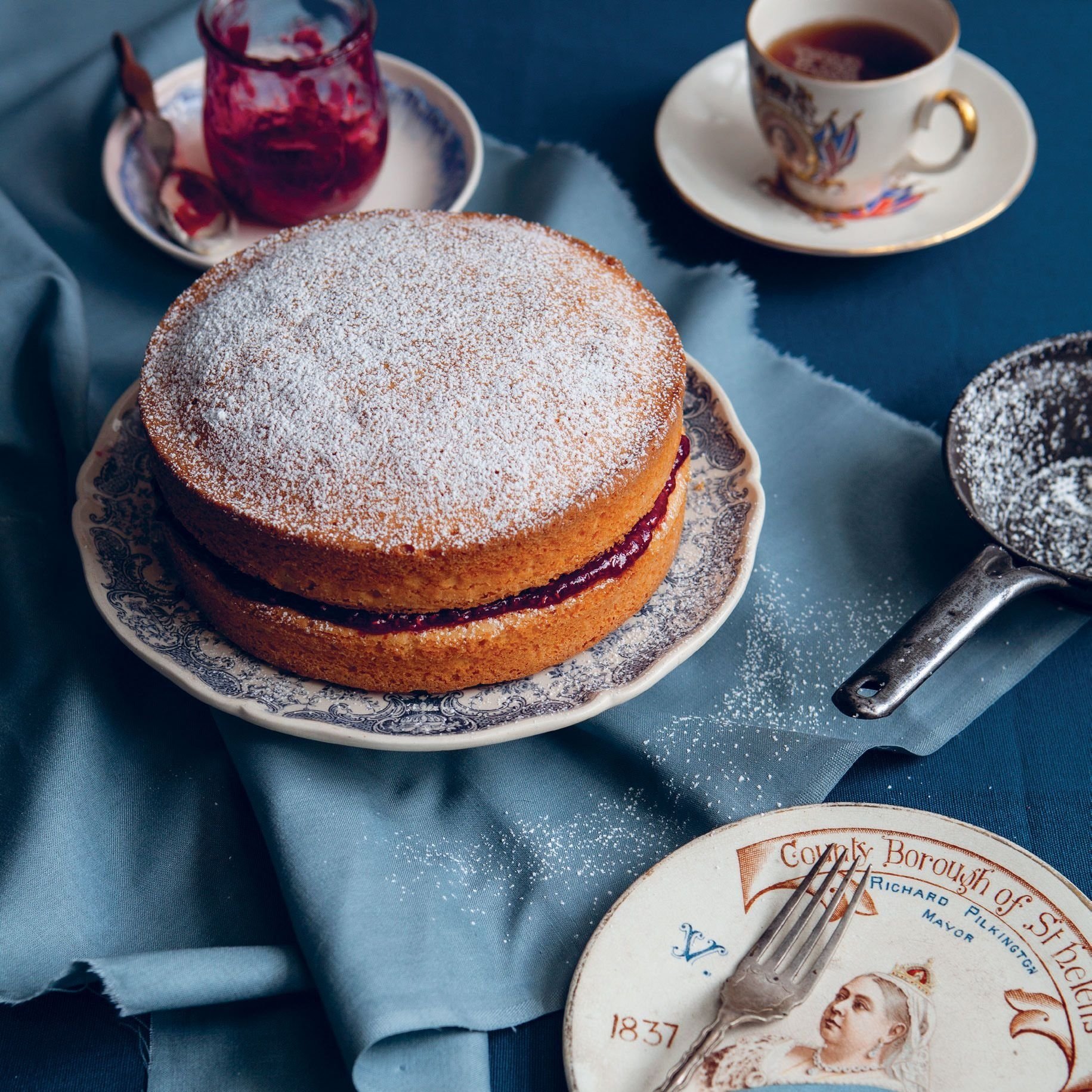
The Victoria Sandwich was just one of several recipes named for Queen Victoria and it first appeared in Isabella Beeton’s Book of Household Management in 1861.
It’s just one of several recipes named for Queen Victoria and it first appeared in Isabella Beeton’s Book of Household Management in 1861. So, is it a sandwich or a sponge? Well, Beeton’s cake was baked in a Yorkshire pudding tin, then halved and spread with “a layer of nice preserve.” The two halves were sandwiched together, then cut into finger-like sandwiches. (So, both names are correct, depending on serving preference. And everyone’s right.)
You might reasonably assume from the name that this cake was one of Queen Victoria’s favorites, but that’s not necessarily the case. Food historian Dr Annie Gray writes: “There’s no evidence that Queen Victoria regularly enjoyed Victoria sandwiches, or that they were invented in the royal kitchens. However, the queen did enjoy cakes, and in the 1880s the kitchens at Windsor would send regular parcels of teatime treats to her wherever she was staying. Her habits helped to popularise afternoon tea…”
Regula Ysewin’s Victoria Sandwich Cake and Trish Deseine’s Victoria Sponge Cake recipes stay true to the cake’s simple roots, with Deseine adding a few fresh strawberries for a summery touch. Karen Burns-Booth uses duck eggs for additional richness in her Duck Egg Victoria Sponge Cake, while Lorraine Pascale breaks with tradition, with her recipe for Lemon Victoria Sponge with Vanilla Buttercream and Lemon Curd. What would Queen Victoria would have made of that?
4 Queen of Puddings/Queen’s Pudding
Another dessert named after a monarch, Queen of Puddings (also called Queen’s Pudding) is made with a breadcrumb-thickened custard topped with raspberry jam and baked with a pillowy cloud of meringue on top. It’s easy to make and a joy to eat – but which monarch it was named after is a topic of some debate.

Which monarch Queen of Puddings was named after is a topic ofd debate.
Alan Davidson traces the dish’s history back to the 17th century but writes, “What queen may have been involved or how is unclear,” before surmising that it was most likely named after Queen Victoria.
Regula Ysewijn adamantly disagrees. “Some claim it was named after Queen Victoria, but it wasn’t,” she states in the headnote to her recipe for Queen of Puddings. She traces the dish’s history back to a Victorian cookbook called Massey and Son’s Comprehensive Pudding Book, published in 1865. What’s not up for debate, though, is the fact that this is one of the most satisfying of traditional British puddings.
5 King George I’s Christmas Pudding
King George I had a nickname – The Pudding King. His name has long been associated with both plum pudding and Christmas pudding, and it has been said that he requested plum pudding to be served as part of the Christmas meal in the first year of his reign, in 1714.
As Regula Ysewijn points out in her recipe for this dish, Plum Pudding evolved over time, becoming known as Christmas Pudding. “It is possible that the tradition of eating a plum pudding with roast beef on festive occasions evolved to it becoming the highlight of the Christmas feast, inspired by customs in the north of England,” she writes.
But, she argues, it was actually George V, rather than George I, who did more to popularize the pudding. “It was not George I but his namesake George V who really made a difference in the pudding’s tale. In 1927, George V encouraged people to cook a Christmas pudding made from ingredients sourced in the British Empire,” she writes.
From there, it seems, there was no going back, and plum pudding/Christmas pudding is now a festive staple, regardless of which King George is more deserving of the Pudding King title.
Florence White’s Good Things in England, published in 1932, contains a recipe for King George I’s Christmas Pudding, which wouldn’t be out of place on today’s Christmas table – nor would Elisabeth Ayrton’s recipe for King George I’s Christmas Pudding, published in The Cookery of England in 1975.
Good traditions die hard.
Try a feast of recipes with connections to British royalty…
Make some of the nostalgia-tinged recipes in our new Dishes Fit for Royal Celebrations collection, or try a trifle or two from our Tremendous Trifles collection, and usher in the Jubilee spirit wherever you are.
More features from ckbk
A taste of the variety of celebratory Easter breads from all around Europe.
Find out five things you probably didn’t know about this classic sweet Easter bun.
The Official Downton Abbey Cookbook brings food historian Dr Annie Gray’s carefully researched recipes to ckbk.
Sign up for ckbk's weekly email newsletter
Advertisement

